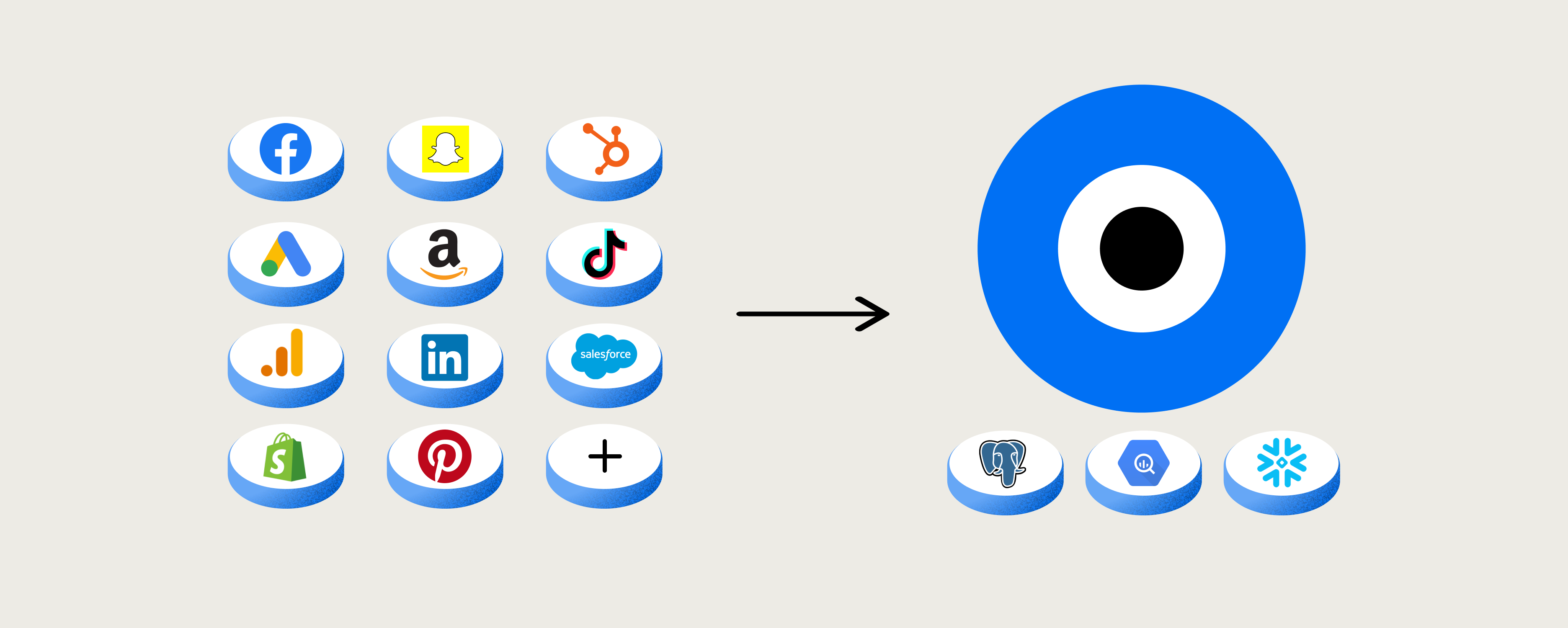Data source
A data source is the original location a piece or set of data comes from, and the number of data sources companies have has been quickly increasing.
What is a data source?
Simply put, a data source is the source of your data — it’s the initial location the data you’re using first came from. A data source can be where data was first created or where it was first documented, depending on the circumstance. If you’re extracting data for data analysis, data visualization, data activation, or other purposes, it’s coming from a data source.
Most modern businesses have dozens if not hundreds of data sources, filled with information about their customers and their company’s performance. As technology advances, not only is there more data to be sourced, but this data is becoming increasingly usable. More and more organizations are striving to be data-driven in how they do business. And it all starts at the data source.
Data source examples
As tech stacks get bigger and bigger, companies have more and more data sources to sift through. Here are just a few examples of data sources in everyday workplace settings:
- Customer Relationship Management (CRM) systems
- Point of Sale (POS) systems
- Ad platforms
- HR tools
- Spreadsheets
- Product databases
- Chatbot logs
- Feedback forms
What are data sources used for?
For any type of data operations, having at least one data source is essential. After all, you’ll need data to analyze, visualize, activate, or otherwise use. There are several ways modern organizations use their data to support decision-making, streamline workflows, and improve overall business performance. Here are a few examples of how data sources are used:
- Creating powerful data dashboards that help companies understand business performance
- Crafting data visualizations that elaborate on customer profiles, industry trends, seasonal fluctuations, etc.
- Syncing data from one source to another, bringing key pieces of information into a more frequently used tool
- Automating manual tasks like reporting, inventory management, status updates, etc.
- Building more customized user experiences
- Developing more targeted marketing and advertising campaigns
There are any number of ways to leverage a company’s data sources. But before they can start turning their insights into actions, it’s important to have the right data infrastructure in place. It begins with extracting data from the various data sources into a single space, namely a data warehouse.
Bringing dispersed data together with Weld
The centrepiece of modern data infrastructure is the data warehouse, where data from multiple sources is brought together, stored, and cleaned. Weld’s Extract function has dozens of pre-built data pipelines — called ‘connectors’ — that Extract, Load, and Transform (ELT) data from various sources in a data warehouse. The benefit of centralizing data from various sources is that it creates a single source of truth for your business, eliminating data silos.

Once your data is brought together in your warehouse, you’ll be able to start using it in the ways outlined above. The Weld platform is also equipped to help you make use of your data. With a best-in-class data modelling tool and several pre-built reverse-ETL pipelines, you can quickly start using your data for reporting, decision-making, tracking your metrics, and automation.
To learn more about how Weld’s data platform and team of data specialists can help you achieve your data goals, book a call with a member of the Weld team.
